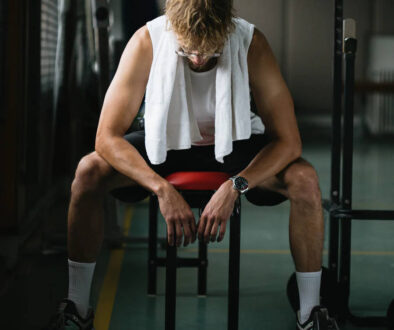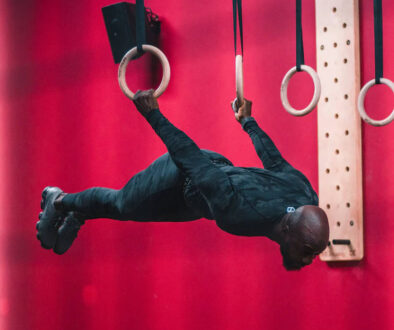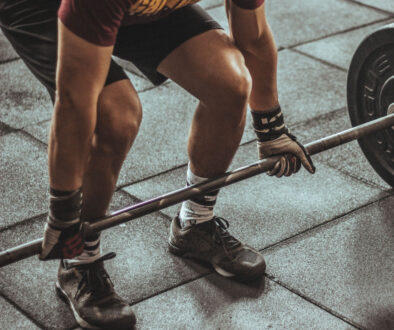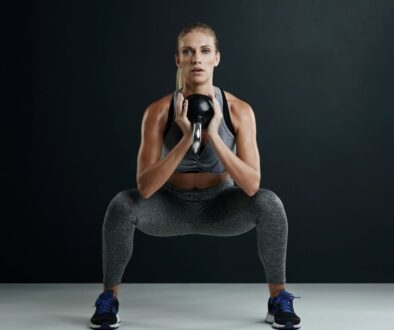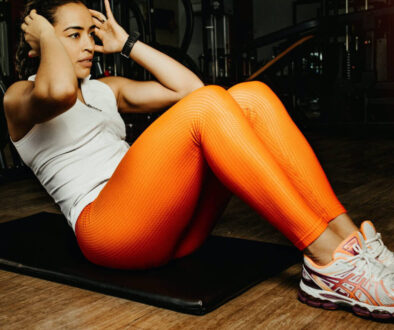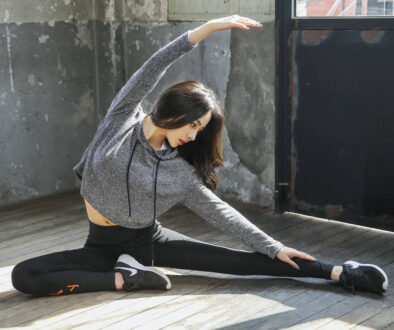The Cossack Squat: Why we should all be incorporating it into our workout
Lacking the visible gains and beginner-friendly technique of the go-to barbell squats and deadlifts, the Cossack squat is an often overlooked exercise in the fitness world. However, the benefits it can provide convinced me that everyone should be incorporating the Cossack squat into their workout program.

When it comes to flexibility and mobility exercises, there aren’t many that can match the skill, balance, and range of motion required to complete a full Cossack squat.
It offers a plane of motion that’s not found in your standard exercises and can resolve muscle imbalances, reduce injury risk, and improve mobility.
In this article, I’ll take a detailed look at the benefits Cossack squats can provide and why we should all be doing them.
What is the Cossack Squat
There’s no doubt that the Cossack squat can be quite a challenging move, especially for beginners. Essentially a single-leg variation of the popular goblet squat, it works the right and left leg individually, taking the body in a lateral direction.
You’ll often find it likened to a side lunge as the movement is comparable and it does work similar muscles. The form is slightly different though. The Cossack uses a significantly wider starting stance and breaks the parallel plane of your thigh with the floor.
Step-by-Step Guide to the Cossack Squat
Step 1: Stand with feet wider than shoulder-width apart.
Step 2: Keeping the movement slow and controlled, shift your weight over the right leg, bending at the knee, and sitting the hips down. Keep your torso upright and left leg straight.
Step 3: As you squat, point the toes on the left foot upwards so that your resting on the heel.
Step 4: Aim to drop the hips below the knees, breaking the parallel plane with the floor. Failing this, just go as low as your mobility will allow. Once at the bottom, pause, then drive upwards through the right foot and back into the starting position.
Step 5: Repeat for an equal number of reps on both legs.
Muscles Used in the Cossack Squat
Using a much lighter load, the Cossack is unable to build muscle in the same way your typical barbell squat might do. Despite this, it does activate similar muscles, including increased activation in muscles that standard squats may not reach.
1. Glute Medius

The Cossack squat is one of few exercises that can activate and strengthen the glute medius. One of three muscles that make up the glutes, the glute medius plays an important role in stabilizing the body during certain movements, especially single-leg movements.
Therefore, developing this muscle can aid balance and stability on other gym exercises like squats and lunges.
2. Obliques
Acting as a stabilizing muscle here, the obliques kick into action as you get closer to the ground and try to avoid the temptation to twist your torso.
Activation of the obliques supports improved balance, posture, and stability across other gym exercises and even day-to-day activities.
3. Other muscles
Other muscles activated in the Cossack squat include:
- Quads
- Calves
- Hamstrings
- Adductors
- Abdominals
Why Should We Do Cossack Squats
There are plenty of benefits that make the Cossack squat a fantastic addition to your leg days
1. Plane of Motion
Your classic leg days will tend to involve movements that work across just one plane of motion. Exercises like traditional squats, deadlifts, and lunges all have their benefits, but using these and only these exercises to build muscle and train can be detrimental.
In sport and day-to-day life, our body tends to move across 3 planes of motion:
- Sagittal
- Frontal
- Transverse
Most exercises only work the sagittal plane (front to back/up & down), thus leading to many of us neglecting the other two planes leading to injury, poor mobility, and muscular imbalance.
Using lateral movements, Cossack squats introduce the frontal plane of motion, easing the concerns associated with neglecting different planes.
2. Mobility and Flexibility
Increasing mobility and flexibility is essential to better performance in competitive sports, reducing injury risk, and good joint health.
The range of motion in the Cossack squat allows the lifter to push their mobility to the limit. It can increase flexibility and mobility in the hips, knees, and ankles.
3. Improved Muscle Strength

The lateral, single-leg movement means that the Cossack squat can overload, stretch, and stress lesser trained muscles in the legs. This means it overloads the weaker fibers, causing them to tear up and repair as they gain more power to withstand future stress.
The glute medius is a good example of a weaker muscle that is overloaded in the Cossack squat. Building strength in these weaker muscles can improve mobility in these muscles whilst supporting stronger powerlifts such as barbell squats and deadlifts.
4. Identify and Resolve Muscular Imbalances
In normal squats and deadlifts, muscular imbalances between the right and left leg aren’t as obvious as the stronger leg can compensate for weaknesses in the other leg.
Single-leg exercises such as the Cossack squat can immediately identify any weaknesses. Repeated reps can even out any imbalances resulting in improved muscle endurance, better injury resistance, and stronger squats and deadlifts.
5. Variation to Your Workout
At some point in your fitness program, you’ll likely reach a mental and/or physical plateau, limiting your gains and motivation to exercise. A common cause of this is a lack of variation in your workout. Repeating the same exercises over and over can become monotonous and boring.
Introducing the Cossack squat into your workout adds variety including a new range of motion and an additional challenge to keep you motivated and inspired to reach your workout goals.
6. Movement Control
The technical skill required to complete the Cossack squat far outweighs that of a barbell squat or forward lunge.
In the Cossack squat, your legs are on uneven planes thus there is a lot less room for technical error. It’s important to be precise with the movement as any departure from the correct pattern can make the exercise difficult.
This necessity for the correct form will improve your ability to control and direct your body purposefully, supporting better movement control and efficiency on plenty of other exercises and in day-to-day life.
Tips to Perfect Your Cossack Squat
There are a few tips you can use to perfect your form on the Cossack squat and really maximize the benefits the exercise can provide.
1. Turn toes outwards
When in the starting stance, try flaring your toes. Doing this can enhance your balance and stability, along with increasing muscle activation in the glutes and quads.
2 .Engage your core
As you lower into the squat position be sure to lock your core and engage your obliques. This not only ensures the activation of these muscles but also prevents arching and twisting of the torso, helping you get as low as possible and preventing injury.
3. Use a weight
Whilst it’s best to do the Cossack squat without any load at first, it can sometimes be helpful to use a light dumbbell or kettlebell if you struggle to maintain balance. Holding the weight out in front of you can act as a counterbalance which will help you keep your torso upright.
Any weight up to 8/9kg will do the job.

4. Know your limits
Most people won’t be able to go all the way to the ground the first time they try this exercise. I definitely couldn’t. For your first attempt, just go as low as you can whilst trying to go a little lower with every rep.
Of course, the eventual target is to achieve that “ass to grass” Cossack squat but it’s important to work towards this rather than forcing it at the expense of good technique. Only go as low as your mobility will allow and over time as your mobility increases you’ll find you can Cossack squat lower and lower.
5. Keep it slow
Maintaining a slow and controlled pace on the Cossack squat ensures there is constant tension on the muscles as you go through the full range of motion.
By maintaining this level of stress you can maximize the strength and endurance gains for your lower body muscles.
Final Thoughts
If you’re keen to level up your workouts, challenge your mobility, or you’re just looking for that added variation to your program, I’ve no doubt the Cossack squat is the answer.
It comes packed with benefits and offers a great challenge whatever your fitness levels.
It’s a highly technical exercise that requires high levels of proficiency but once you integrate it into your workouts you won’t regret it.



